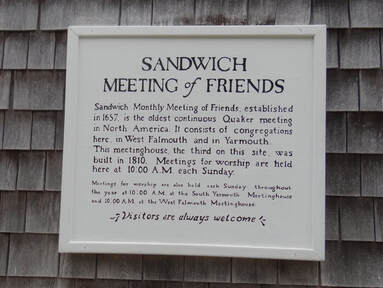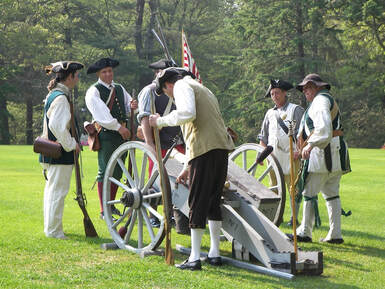|
Sandwich was settled in 1637 and incorporated two years later – marked by the building of a Town House at the corner of River and Main Street. Both Town Meetings and religious services were held there for almost two hundred years until legislation was passed to separate church and state in 1833. Sandwich immediately began plans to build a new Town Hall and used Greek Revival architecture to represent the community commitment to democratic values.
|


|
The Town that Glass Built
Until 1825 Sandwich was a small close-knit community of farmers and fishermen. At that time it underwent it's most dramatic change when Boston businessman Deming Jarves built a glass factory by the site of the current Boardwalk. The factory grew rapidly into one of the largest producers of glassware in the country. Over 500 workers produced over five million pieces of glass annually by the 1850s. Many of the skilled workers were imported, some from Ireland, creating the Cape’s first Catholic population and establishing its first Catholic Church. Workers housing was built by the company and clustered near the factory in the part of town still known as Jarvesville. Managers and the highest skilled craftsmen lived in the Village area where many of their homes stand today. The glass factory produced a huge range of items – at this time glass became affordable for extensive use by the middle class. By the 1880s however, the glass factory was closed due to the labor strikes, an economic depression, the loss of Jarves' leadership, and new factories being built further west which were closer to natural gas fuel sources. |
|
Completion of the Cape Cod Canal in 1914
This significant event was remarkably almost 300 years in coming. In 1623 the Pilgrims scouted the land between the Manomet and Scusset rivers, a traditional Native American portage, and determined this would be the best route for a canal. In 1697 the General Court of Massachusetts considered a formal proposal to build a canal, but no action was taken. In 1776 George Washington, concerned about its military implications, had the location examined. Attempts were made later to actually dig the canal, but soon failed. Finally, in 1909 work was begun on what is now the longest sea-level canal in the world. Learn more about the history of Sandwich After the glass factory closed, the town slumbered for almost 75 years until national prosperity and improved roads brought tourists and an increasing number of residents. From 1950 to 2000 the population expanded rapidly from approximately 1,500 residents to about 20,000. Startled by its rapid growth, the community made a commitment to historic preservation and land conservation beginning in the 1960s, recognizing that the protection of historic sites and unspoiled lands was vital to Sandwich’s heritage tourism, unique environment, and quality of life. |
|
Sandwich Chamber of Commerce
520 Rte 130 - PO Box 744 Sandwich, MA 02563 (508) 681-0918 [email protected] |
